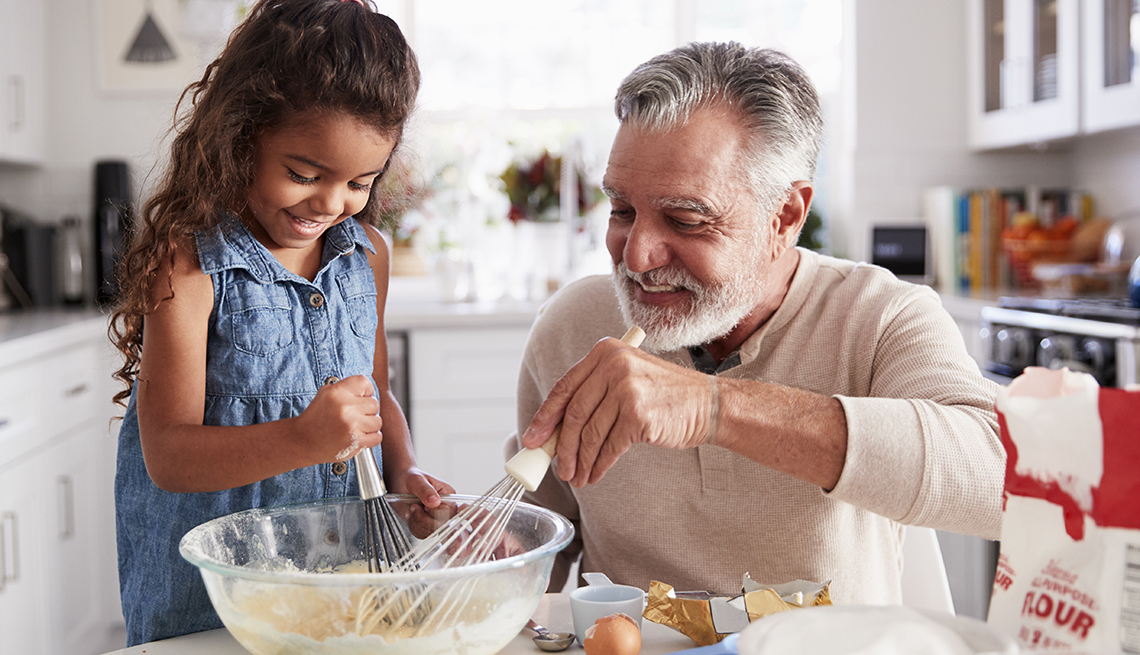
- Select a language for the TTS:
- UK English Female
- UK English Male
- US English Female
- US English Male
- Australian Female
- Australian Male
- Language selected: (auto detect) - EN
Play all audios:
If you're looking to introduce a sweet new tradition of cooking together, both Aronian and McKitrick say the trick is to start with simple recipes and slowly add new challenges, always
keeping in mind what age groups are capable of. Toddlers, for example, can mix dry ingredients, use a pastry brush to oil breads and vegetables, and use cookie cutters. They love to frost
cakes, though be prepared for a mess. Early elementary-school-age children can crack eggs, peel vegetables, and cut herbs or soft vegetables with scissors. Older children can measure and mix
dry ingredients, beat eggs and pound chicken on a cutting board. When working with young chefs, the experts suggest enjoying the process rather than focusing on the outcome. "Patience
is the key,” says Amy Driscoll, the manager of King Arthur Flour's Bake for Good program, a school-based project that teaches schoolchildren how to bake bread. “They're going to
knock things over. They're going to get eggshells in the batter. It's fine. It's totally OK to make a mistake." When Aronian's grandchildren were younger, she
introduced them to borma, a pastry made with nuts and phyllo dough, using a family recipe that her father grew up eating in Persia. She taught the children to roll the phyllo dough into
cigar shapes, using a 10-inch piece of copper pipe. Now that Aronian's oldest grandchildren are teenagers, they contribute to other family recipes. Their favorite is what Aronian
proclaims is “the world's best carrot cake,” which has extra carrots and a little bit of coconut oil added to the wet ingredients. The carrots add moisture, and the coconut oil adds
“just a hint” of that nutty flavor. One of the Aronian holiday traditions is baking salmon wrapped in a yeasted dough. Aronian prepares the fish, and before it goes into the oven, the
children decorate the dough with a mouth, eyes, fins and scales.


:max_bytes(150000):strip_icc():focal(749x0:751x2)/willow-smith-015259786ae944aa86ea14e02c093199.jpg)